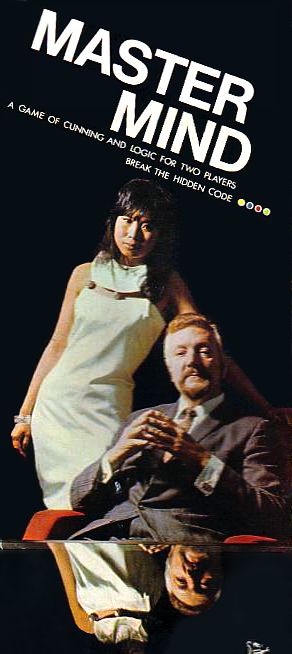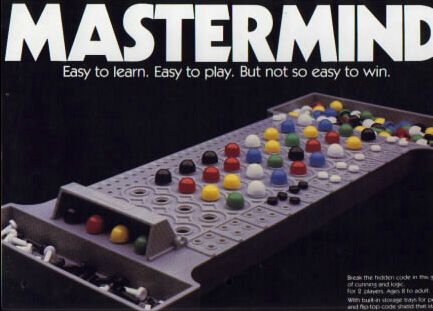The above co-ordinates are not for the cache.
The solution to the puzzle is N51° 29.ABC W 000° 5.DEF.
To find the values of ABC and DEF you will need to solve the puzzle below.
I had to move the cache slightly so subtract 0.003 from the Northing and add 0.002 to the Westing.

The cache is a small container similar in size to a film cannister.
It is located in an award-winningly pleasant place - something of a rarity in the area. When the cache was placed in 2007 the area was very pleasant. It was less pleasant until 2011, but seems to have improved again since then.
Sky available.
You may find the paper at this link useful when you get stuck on D (many people do)
http://colorcode.laebisch.com/links/Donald.E.Knuth.pdf
One of our favourite games in the 70's was Mastermind.

According to Wikipedia, Mastermind is a simple code-breaking board game for two players, invented in 1970 by Mordecai Meirowitz, an Israeli postmaster and telecommunications expert.
In this game the setter chooses a code, in this case a 3-digit number from 000 to 999, which is kept secret from the solver. The solver aims to deduce the hidden code in as few turns as possible. A solver's turn consists of choosing a 3-digit number to play. The setter then scores this number as follows:
* Each number which is in the hidden code number and in the correct position scores a black peg.
* Each remaining number which is in the hidden code, but not in the correct position scores a white peg.
The solver continues to take turns until she has deduced the hidden code - up to a maximum of 10 turns. Normally when playing you would use information deduced from earlier turns in choosing which numbers to play.
For example, if the hidden code was 123 and the solver played the number 327, then
the 3 scores a white peg for being correct but in the wrong position,
2 scores a black peg for being in the correct position,
the 7 scores nothing.
Another example, if the hidden code was 118 and the solver played the number 321, then the
the 3 and 2 score nothing and the 1 scores one white peg for being correct but in the wrong position.
The table below shows the results of a solver making several attempts to solve ABC and DEF. Deduce ABC and DEF from the information provided below:
| Turn |
ABC-black |
ABC-white |
DEF-black |
DEF-white |
| 123 |
0 |
1 |
1 |
0 |
| 456 |
0 |
0 |
1 |
0 |
| 789 |
1 |
1 |
0 |
0 |
| 036 |
0 |
0 |
0 |
1 |
| 147 |
0 |
1 |
0 |
0 |
| 510 |
0 |
1 |
0 |
1 |
You can check your answers for this puzzle (without the physical cache offsets) on Geochecker.com.